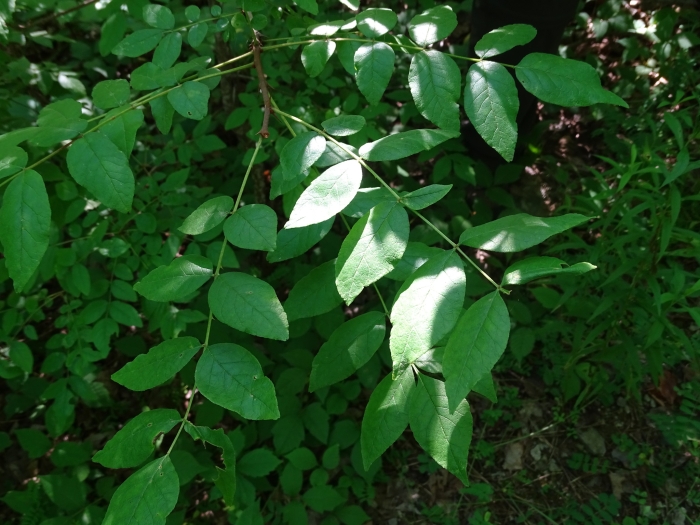Common Pricklyash
(Zanthoxylum americanum)
Common Pricklyash (Zanthoxylum americanum)
/
/

Reuven Martin
Public Domain





















































Estimated Native Range
Summary
Common Pricklyash is valued for its unique appearance, with spiny branches that provide textural interest in the landscape. It is used for naturalizing in wild gardens, as a barrier plant due to its spines, and for its aromatic bark and fruits, which have culinary and medicinal uses. It thrives in full sun to part shade and adapts to a range of soil types, from slow to fast drainage. While it is not a heavy water user, medium moisture will support optimal growth. Gardeners should be aware that the spines can make handling difficult, and the plant may sucker, forming colonies if not managed.CC BY-SA 4.0
Plant Description
- Plant Type: Shrub, Tree
- Height: 15-20 feet
- Width: 10-15 feet
- Growth Rate: Moderate
- Flower Color: N/A
- Flowering Season: Spring
- Leaf Retention: Deciduous
Growth Requirements
- Sun: Full Sun, Part Shade
- Water: Medium
- Drainage: Fast, Medium, Slow
Common Uses
Bee Garden, Bird Garden, Butterfly Garden, Deer Resistant, Drought Tolerant, Edible*Disclaimer: Easyscape's listed plant edibility is for informational use. Always verify the safety and proper identification of any plant before consumption., Fragrant, Low Maintenance, Rabbit Resistant, Salt Tolerant, Street Planting
Natural Habitat
Native to the understory of deciduous forests, forest edges, and riparian zones
Other Names
Common Names: Northern Prickly-Ash , Toothachetree , Prickly-Ash , American Prickly-Ash , Common Prickly-Ash , Toothache Tree , Common Pricky-Ash , Clavalier D’Amérique , Frêne Épineux , Amerikanskt Pepparträd , Toothache-Tree
Scientific Names: Zanthoxylum americanum , Zanthoxylum fraxineum , Zanthoxylum americanum f. impuniens , Zanthoxylum mite , Zanthoxylum americanum f. americanum , Zanthoxylum cauliflorum , Zanthoxylum fraxinifolium , Zanthoxylum ramiflorum , Thylax fraxineum , Xanthophyllon clavatum
GBIF Accepted Name: Zanthoxylum americanum Mill.